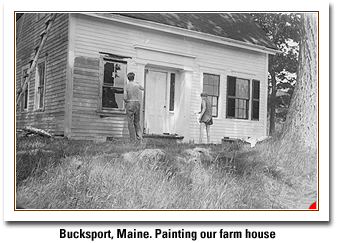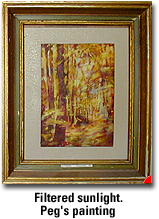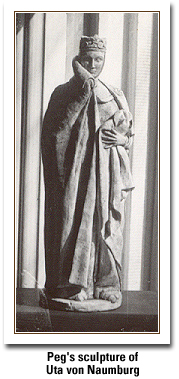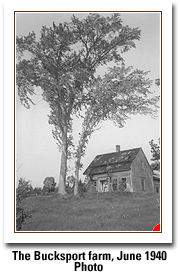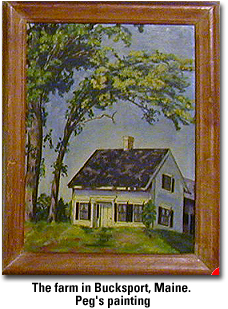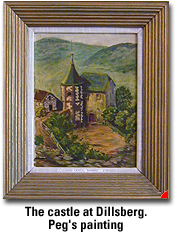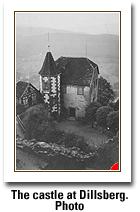|
Hofstra College
To pick up the narrative after Peg and I left Heidelberg, we returned to the US with our Ph.D.s, I started teaching at Hofstra University in Hempstead, Long Island, then Hofstra College. We were married the following year, in New York City on June 16, 1938, and lived for a year in an apartment house in Hempstead.. I had majored in economics at NYU, and my chief professor was Walter Earl Spahr, who had written the textbook we used. I had done very well, and was first president of the economics club, which I helped found. So Professor Spahr had a high regard for me and had recommended me for the faculty appointment at Hofstra. Peg taught at a finishing school in New York City until the following year when we were married. After we were married I kept in touch with Professor Spahr and we invited him and his wife over for dinner. Peg had bought some kind of meat, but as the hour drew near, we both decided it would be no good for the dinner. What to do? Some days earlier, my mother had given me for our cat a big slice of raw steak which she felt had "gone by." It did smell somewhat smacky. But we made the fateful decision and Peg cooked the steak for the Spahrs' dinner with us. The event turned out happily. The steak tasted real good, and the Spahrs complimented her on the meal. My mother was shocked when she learned we had used that "rotten" steak on such an auspicious occasion. We soon moved from our apartment to a rented house. It was heated by a coal furnace in the cellar, and with steam radiators throughout. Our bedroom on the second floor was over the space in the cellar occupied by the furnace. As many old-timers know, the coal furnace has to be banked at night, with the top door open and the bottom door closed. This arrangement permits the fresh air to go through the open top door and on into the chimney, without heating the fire. But in the morning, the doors must be reversed so that the air intake through the bottom door heats up the fire. It takes the fire a while to get hot enough to heat the water whose steam goes up to the radiators. So we set the alarm for an hour earlier and I would traipse down to the cellar and switch the furnace doors. Then back into bed for an hour until wake-up time. A real nuisance, yes, believe it! One day while I was out teaching, Peg got to work and rigged a rope through the bedroom window and down to the cellar window. In the cellar, in some ingenious way, she rigged the furnace doors with wire so that with one firm jerk of the rope from the bedroom it would both close the top furnace door and open the bottom one. From then on I could yank on the rope and do the job even without getting out of bed! That was this same girl who's lying here with Alzheimer's disease. She was my treasure then and she is my treasure now. 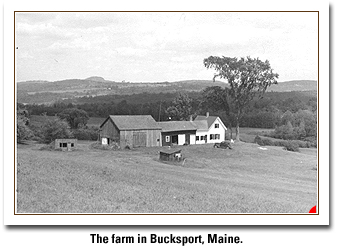
Peg, and I were rather diverse in the faculty friendships we developed at Hofstra. Actually, so far as we could see, there were three social cliques among the faculty. We were the only faculty couple who belonged to all three. Our favorite was what we thought of as the "intellectual cocktail crowd," with which we spent many hours in often profound and sometimes banal discussion. Then there was the "bridge" crowd, in which foursomes would spend evenings at that hilarious game of trumps and finesses. We enjoyed the company of these couples, but eventually became sorry that concern with the card game really inhibited any serious social discussion. Lastly, there was the athletic clique, consisting of the athletic director, the football coach, the trainer, one or two others from athletics, and their wives. I became friendly with the athletic director in a peculiar way. The athletic program was still developing, and they had no provision for boxing. I had done some boxing in my late adolescence, and a few students came to me to ask if they could set up a boxing club with me as faculty adviser. I said yes, and soon found myself giving one or two of them the most elementary instructions in boxing. Unfortunately, there was one husky lad who got in a good swift punch to my rib cage, and I had to quit that session. I had a physician look at my ribs, and he said I should have an x-ray. What difference would it make if the x-ray found my rib was cracked? None; he would bandage my chest tight in either case. So, why the x-ray? I saved ten dollars. That ended my boxing career, but not my acquaintance with the athletic director. We got to be good friends, and visited back and forth with our wives for pleasant evenings together. Continue with Alfred University |
